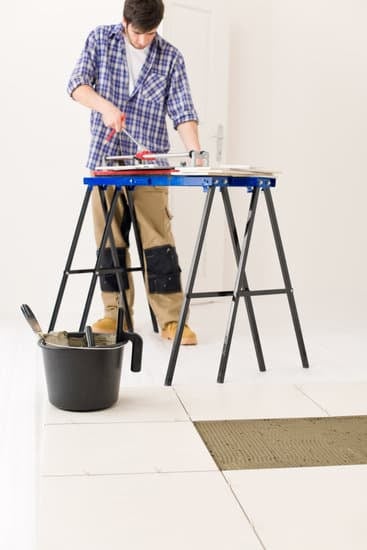Are you tired of dropped calls and poor signal strength in your home? In this article, we will explore how to improve cell phone reception in your home. Good cell phone reception is essential for staying connected, whether it’s for work, keeping in touch with loved ones, or simply browsing the internet. Poor reception can be frustrating and disruptive, but there are several steps you can take to improve it.
There are various factors that can contribute to poor cell phone reception in your home, including building materials, distance from cell towers, and obstructions. Understanding these factors is crucial in identifying the best solutions for improving signal strength. By conducting a signal strength test using recommended apps or tools, you can accurately assess the current state of your cell phone reception.
Signal boosters and repeaters are effective devices for improving cell phone reception in the home. We will discuss the different types available and how they can enhance your signal strength.
Additionally, we will explore the option of Wi-Fi calling as a solution for areas with poor signal strength, providing step-by-step instructions on setting it up on various devices. These are just a few of the strategies we will cover to help you achieve better cell phone reception at home.
Understanding the Causes of Poor Reception
Factors Affecting Cell Phone Reception
Poor cell phone reception in your home can be caused by various factors. Building materials such as concrete, metal, and low-e glass can block or weaken signals, leading to dropped calls and slow data speeds. The distance from cell towers also plays a significant role in signal strength, especially for those living in rural or remote areas. Additionally, obstructions like trees, hills, and other buildings can interfere with the transmission of cellular signals.
Impact of Building Materials
The materials used in constructing your home can significantly impact cell phone reception. For example, metal objects like aluminum siding or insulation in walls can reflect signals away from your phone. Conversely, concrete and brick walls can absorb signals, weakening their strength as they enter your home. Understanding which materials are impacting your reception is essential for implementing effective solutions.
Effects of Distance From Cell Towers
The proximity of your home to the nearest cell tower directly influences signal strength. Those who live far from a tower may experience weaker reception due to the longer distance that the signal must travel. Additionally, the more obstacles between your home and the cell tower, the greater the chance of interference with the signal. Understanding how these factors affect your reception is crucial for determining the best course of action to improve it.
Conducting a Signal Strength Test
When faced with poor cell phone reception in your home, it’s essential to first determine the current signal strength before making any changes or investments. Conducting a signal strength test is a crucial step in the process of improving cell phone reception. It allows you to identify areas with weak signals and understand the extent of the problem.
One way to conduct a signal strength test is by using the Field Test Mode on your smartphone. This mode provides more detailed information about your signal strength than the standard bars displayed on your screen. To enter Field Test Mode, simply dial *3001#12345#* and press call. Another method is to use apps such as OpenSignal, Network Cell Info Lite, or LTE Discovery, which are designed to provide accurate measurements of signal strength based on your location.
Keep in mind that factors such as weather conditions, time of day, and even the type of device you’re using can affect signal strength. By conducting regular tests at different times and locations within your home, you’ll be able to gain valuable insights into where improvements are needed. Armed with this information, you’ll be well-equipped to make informed decisions about how to enhance cell phone reception in your home.
| Signal Strength Test Methods | Benefits |
|---|---|
| Field Test Mode | Provides detailed information about signal strength |
| Signal Testing Apps | Accurate measurements based on location |
Identifying Signal Boosters and Repeaters
When it comes to improving cell phone reception in the home, signal boosters and repeaters can be a valuable solution. Signal boosters are designed to amplify existing signals, while repeaters work by receiving a weak or low signal, amplifying it, then rebroadcasting the boosted signal. These devices come in various forms and are available for purchase to suit different needs and preferences.
There are three main types of signal boosters: vehicle, home/office, and commercial-grade. Vehicle boosters are typically used in cars, trucks, RVs, and boats to enhance cell phone signals on the go. Home/office boosters are designed to improve reception within residential or small commercial spaces. Finally, commercial-grade boosters are suitable for larger buildings like offices, warehouses, hospitals, and hotels.
When choosing a signal booster or repeater for your home, it is crucial to consider factors such as the size of the area that needs coverage, the strength of the outside signal (which can be determined with a signal strength test), as well as any specific carrier requirements. Additionally, some models may require professional installation to ensure optimal performance.
In order to effectively identify which signal booster or repeater is best suited for your home’s needs, it is essential to research reputable brands and read product reviews from other users who have similar requirements. It’s important to keep in mind that certain factors like building materials and environmental obstructions can still impact the effectiveness of these devices. So before making any purchases, careful consideration and planning are necessary for successful implementation.
| Type of Signal Booster/Repeater | Main Use |
|---|---|
| Vehicle | Enhancing cell phone signals on the go in cars, trucks, RVs, and boats |
| Home/Office | Improving reception within residential or small commercial spaces |
| Commercial-Grade | Suitable for larger buildings like offices, warehouses,hospitals,and hotels. |
Improving Reception With Wi-Fi Calling
In areas where traditional cell phone reception is poor, Wi-Fi calling can be a game-changer. By using your home internet connection to make and receive calls, you can bypass the weak cellular signal and ensure clear, consistent communication. Here are some steps you can take to set up and use Wi-Fi calling on your device:
- Check compatibility: Not all devices and carriers support Wi-Fi calling, so the first step is to check if your smartphone and service provider offer this feature. Most newer smartphones and major carriers do support Wi-Fi calling, but it’s always best to double-check.
- Enable Wi-Fi calling: Once you’ve confirmed that your device and carrier support Wi-Fi calling, you’ll need to enable the feature in your phone’s settings. This usually involves going into the “Phone” settings menu and toggling on the Wi-Fi calling option.
- Connect to a strong Wi-Fi network: To ensure the best call quality, make sure that your smartphone is connected to a reliable Wi-Fi network with a strong signal. Positioning your router for optimal coverage as mentioned in a previous section can help with this.
Using Wi-Fi calling can significantly improve call quality and reliability in areas with poor cellular reception. By following these steps, you can make sure that you’re taking full advantage of this feature on your compatible device.
Remember that while Wi-Fi calling is a great solution for making calls indoors where cell signal is weak, it may not work for sending texts or using mobile data. In those cases, improving overall cell phone reception with other methods like signal boosters or repeaters may still be necessary.
Positioning Your Router for Better Signal
Tips for Placement
When it comes to improving cell phone reception in your home, the position of your Wi-Fi router plays a crucial role. To ensure optimal signal strength, it’s important to place your router in a central location within your home.
This will help provide equal coverage in all areas and minimize any potential dead zones. Additionally, elevating the router to an elevated position such as a high shelf or mounting it on the wall can also help improve signal distribution throughout the house.
Minimizing Interference
Interference from other electronic devices can significantly impact cell phone reception. To minimize interference and maximize signal strength, it’s advisable to keep your router away from other electronics that emit wireless signals, such as cordless phones, microwaves, and Bluetooth devices. Ensuring that there are minimal physical obstructions between the router and areas where you use your cell phone most frequently can also contribute to better reception.
Utilizing Settings for Optimization
Most modern routers come with settings that allow users to optimize their Wi-Fi signal for better performance. Features such as channel selection and bandwidth settings can be adjusted to reduce interference and maximize signal strength.
Exploring these settings and making necessary adjustments based on the specific layout and needs of your home can result in noticeable improvements in cell phone reception. Additionally, regular firmware updates for the router should not be overlooked, as they often include performance enhancements that can positively impact overall signal strength.
Using External Antennas
External antennas are a great option for improving cell phone reception in your home, especially if you live in an area with weak signal strength. These antennas can help boost the signal from nearby cell towers and provide better connectivity for your devices. Here are some tips on using external antennas to improve cell phone reception:
- Benefits of External Antennas: External antennas can significantly improve cell phone reception by capturing signals more effectively than the built-in antennas on your devices. They can also help reduce dropped calls and improve call quality.
- Choosing the Right Antenna: When selecting an external antenna for your home, consider factors such as the frequency bands used by your carrier, the distance from the nearest cell tower, and any potential obstructions. It’s important to choose an antenna that is compatible with your specific needs.
- Installation and Setup: Once you have chosen the right external antenna, proper installation is crucial for optimal performance. Positioning the antenna in a location with maximum signal strength is essential. Additionally, following manufacturer instructions for setup and configuration is important to ensure the best results.
By utilizing external antennas, you can make a significant impact on improving cell phone reception within your home. Understanding how they work and choosing the right antenna for your specific situation will help ensure that you get the best results possible. Keep in mind that external antennas may require some initial investment and effort for installation, but the improved cell phone reception they provide can greatly enhance your overall communication experience at home.
Additional Tips for Improving Cell Phone Reception
Improving cell phone reception in your home can sometimes require more than just signal boosters and repeaters. There are additional tips that can further enhance the quality of your cell phone signal within the confines of your living space. One often overlooked factor that affects cell phone reception is the software on your device. Keeping your phone’s operating system and network settings updated can significantly improve signal strength and call quality.
Another important aspect to consider is the presence of any obstructions that may be affecting your cell phone reception. It is advisable to remove any electronic devices, metal objects, or large appliances that could potentially interfere with the signal. Additionally, adjusting the location of your router or access point can also help eliminate interference and improve overall signal strength for both cellular service and Wi-Fi calling.
Furthermore, considering the use of a microcell as a solution for poor cell phone reception in your home can be beneficial. A microcell acts as a mini cellular tower, enhancing coverage in remote areas or places with weak signals by using an existing broadband connection. This can provide a dedicated high-quality cellular signal in areas where traditional cellular towers might not reach.
Overall, implementing these additional tips alongside other methods mentioned in this article can lead to a substantial improvement in cell phone reception within your home environment. By addressing all potential factors that contribute to poor signal strength, you can ensure consistent and reliable communication through your mobile devices, regardless of their location within your residence.
Conclusion
In conclusion, having good cell phone reception in your home is essential for staying connected with friends, family, and colleagues. The frustration of dropped calls and poor signal strength can be a thing of the past with the right strategies and tools in place. By understanding the causes of poor reception and taking proactive steps to improve it, you can ensure that you have reliable cell phone service no matter where you are in your home.
Whether it’s conducting a signal strength test, using signal boosters and repeaters, utilizing Wi-Fi calling, optimizing the positioning of your router, or installing external antennas, there are various solutions available to improve cell phone reception in your home. It’s important to take advantage of these options to enhance your communication experience and avoid the annoyance of missed or dropped calls.
In closing, I encourage readers to take action and implement the tips provided in this article to improve their own cell phone reception. By following these recommendations, you can enjoy better call quality and connectivity within your home. Don’t let poor cell phone reception continue to be a source of frustration – make the necessary changes today for a more reliable communication experience.
Frequently Asked Questions
How Can I Boost My Cell Phone Signal in My House?
There are a few ways to boost your cell phone signal in your house. One option is to use a signal booster or repeater, which amplifies the existing signal from outside and broadcasts it within your home.
Another option is to position your router in a central location and keep it away from metal objects or other electronic devices that could interfere with the signal. Additionally, you can try using Wi-Fi calling or invest in a femtocell, which acts as a mini cell tower in your home.
How Can I Improve My Mobile Signal Strength Indoors?
Improving mobile signal strength indoors can be achieved by trying different methods. First, consider installing a microcell or femtocell in your home if you have poor reception. You can also try using a network extenders or a residential signal boosters to independently boost cellular signals inside buildings for better coverage.
Do Homemade Cell Phone Signal Boosters Really Work?
Homemade cell phone signal boosters may not always work effectively and could potentially interfere with the network’s operation. While there are DIY tutorials available online for creating homemade boosters, they may not meet the safety and regulatory standards required, and their effectiveness is often unreliable compared to professionally manufactured equipment.
It’s best to opt for commercially available solutions that are tested and proven to work without causing interference or safety hazards on the network.

I’m thrilled to have you here as a part of the Remodeling Top community. This is where my journey as an architect and remodeling enthusiast intersects with your passion for transforming houses into dream homes.





